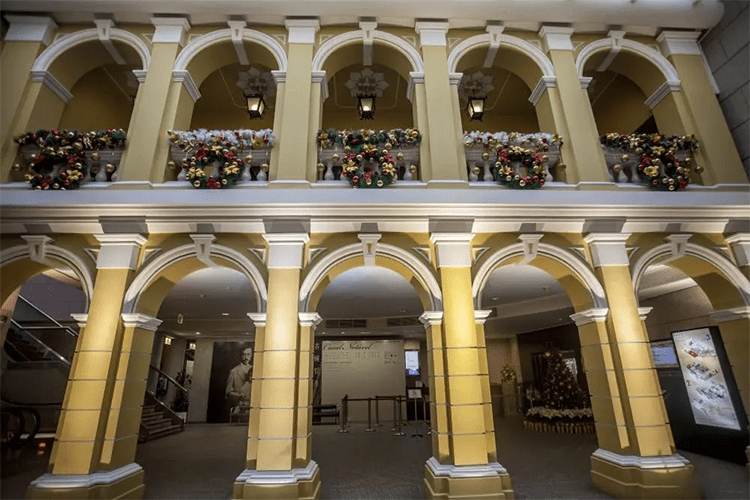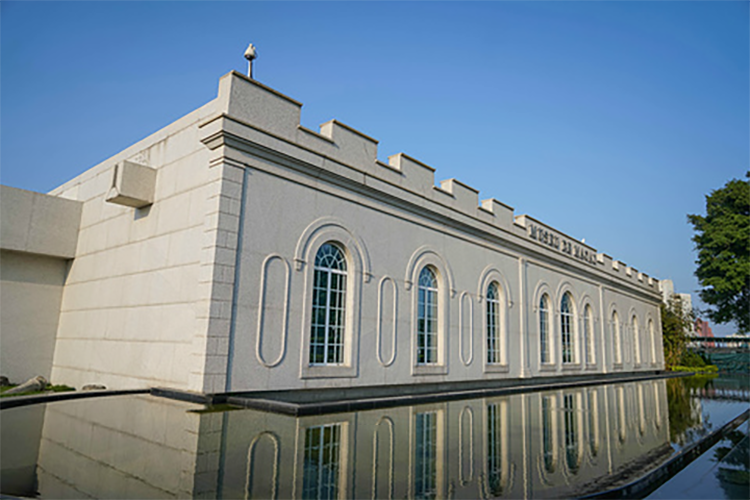Explore Macau History at the Macau Museum: 400 Years of Culture
Introduction:
Stand atop Fortaleza do Monte and feel Macau’s history
Perched on the highest point of the Macau Peninsula at the top of Fortaleza do Monte, a building that blends history and modern exhibition design overlooks the city’s changing skyline. This is the Macau Museum, a treasury that condenses more than 400 years of Sino‑Western cultural exchange. Walking through its rooms is like opening a richly illustrated history book — from humble fishing-village life to a bustling international port, from Chinese folk art to Portuguese colonial traces, every exhibit tells Macau’s unique story.
Whether you are a history buff, a cultural explorer, or a photography enthusiast, the Macau Museum offers a visual and intellectual feast. Remarkably, the museum itself is a historical relic — it is integrated into the 17th‑century Fortaleza do Monte remains and features a rooftop viewing terrace so you can admire Macau’s panorama while exploring rare artifacts.
1. Museum focus and identity
The Macau Museum, established in 1998, is a specialized history museum dedicated to presenting Macau’s multicultural development since the 16th century. Its distinctive features include:
– A central narrative of “Sino‑Western cultural exchange”: Unlike conventional history museums, the Macau Museum not only displays local Chinese culture but also explores Portuguese colonial influences and Macau’s rise and decline as an international trading port.
– The building as history: The museum is built into the Fortaleza do Monte site; some galleries occupy original fort chambers, allowing visitors to soak in a palpable historical atmosphere.
– Multimedia and interactive experiences: Original objects, models, reconstructed scenes and digital technologies bring Macau’s social changes to life.
In one sentence:
the Macau Museum is a “time corridor witnessing 400 years of Sino‑Western encounters and fusion.”
2. Architecture and history: where a museum meets a military fortress
(1) Fortaleza do Monte: Macau’s landmark
Fortaleza do Monte, built in 1617, was a Portuguese military stronghold used to fend off pirates and foreign invasion. Today the fort is no longer military but remains one of Macau’s most important cultural landmarks.
(2) Museum design
The museum’s architecture preserves the fort’s military features while incorporating modern exhibition spaces:
– Three levels, 2,800 square meters: The galleries span the basement, first floor and second floor, each focusing on different historical themes.
– Rooftop viewing terrace: A 360° vantage point overlooking the Macau Peninsula, with sights including the Ruins of St. Paul’s and the Grand Lisboa — an excellent spot for city panorama photography.
– Seamless blending of old and new: Several exhibition rooms are located within the fort’s original arched stone chambers, helping visitors feel the weight of history.

3. Must-see exhibits and exhibition highlights
(1) Signature pieces and core exhibitions
The permanent exhibition “The History of Macau” is organized into three themes that walk you through the city’s evolution:
① First floor: Early Macau and folk culture
– Fishing village Macau: Ship models, fishermen’s tools and daily objects trace Macau’s growth from a small fishing community into a trading port.
– Chinese traditional festivals and folk arts: Dragon and lion dances, carved deity figures and other folk arts demonstrate cultural continuity in Macau’s Chinese communities.
② Second floor: International trading port and multicultural life
– A key node on the Maritime Silk Road: Ancient trade ceramics, silks and tea tell the story of Macau’s role in global trade from the 16th to 19th centuries.
– Portuguese colonial imprints: Catholic artifacts, Portuguese architectural models and other items display the intertwining of East and West.
③ Third floor: Contemporary Macau and distinct culture
– Post‑handover development: Displays on modern urban planning and heritage conservation in Macau today.
– Hands‑on cultural experiences: Interactive areas let visitors try traditional crafts such as almond cookie making and Portuguese tile painting.
(2) Hidden gems often overlooked
– The Fortaleza do Monte interior: Some visitors focus on gallery displays and miss that the museum is itself built in historic fort structures — take time to examine the ancient stonework.
– Multimedia interactive area: AR reconstructions let you “travel” back to 19th‑century Macau streets — a great photo opportunity.
4. Visitor tips: how to tour efficiently
(1) Recommended routes
– Quick highlights (1 hour):
1. Head straight to the second floor to learn about Macau’s trading port history, especially the Maritime Silk Road exhibits.
2. Go up to the third floor for contemporary culture and interactive experiences.
3. Finish at the rooftop terrace for panoramic photos of the city.
– Deep dive (2–3 hours): Tour floor by floor and explore the Fortaleza do Monte structures in detail.
(2) Best times to visit
– Before 10:00 AM or after 3:00 PM: Avoid tour group peaks and enjoy better light for photography.
– Weekends: Free guided tours are often available in Chinese, English and Portuguese.
(3) Who will enjoy it
– Culture lovers: Great for those who want to understand Macau’s layered history.
– Families: Interactive displays are child‑friendly.
– Photographers: The rooftop terrace offers one of the best panorama spots on the Macau Peninsula.

5. Practical information and tips
(1) Basic details
– Address: Top of Fortaleza do Monte, Macau Peninsula (near the Ruins of St. Paul’s)
– Opening hours: 10:00–18:00 (last admission 17:30), closed Mondays
– Admission: MOP 15 for adults, MOP 8 for students and seniors (cash, WeChat Pay and Alipay accepted)
(2) Getting there
– On foot: About a 10‑minute uphill walk from the Ruins of St. Paul’s.
– Bus: Routes such as 10A, 11 and 21A stop near “Ruins of St. Paul’s”/”Grand Prix Museum” area.
(3) Other tips
– Wi‑Fi: Free museum Wi‑Fi is available.
– Accessibility: Elevators and wheelchair access are provided.
– Photo rules: No flash photography inside exhibition halls.
Conclusion:
A cultural visit not to be missed
The Macau Museum is more than a display of artifacts — it’s a living cultural experience. Here you can touch 400‑year‑old fort walls and, through multimedia, step back into 19th‑century Macau streets. Whether you come to learn history, admire the building, or capture cityscapes from the rooftop, the museum deserves a dedicated visit.
Travel tip:
Combine a visit to the Macau Museum with the Ruins of St. Paul’s and Senado Square for a half‑day cultural itinerary to fully appreciate Macau’s unique charm.


